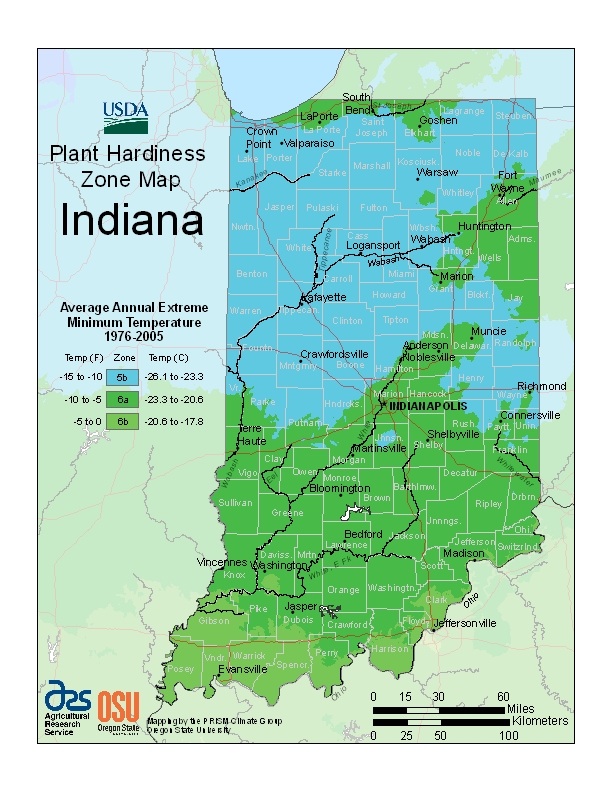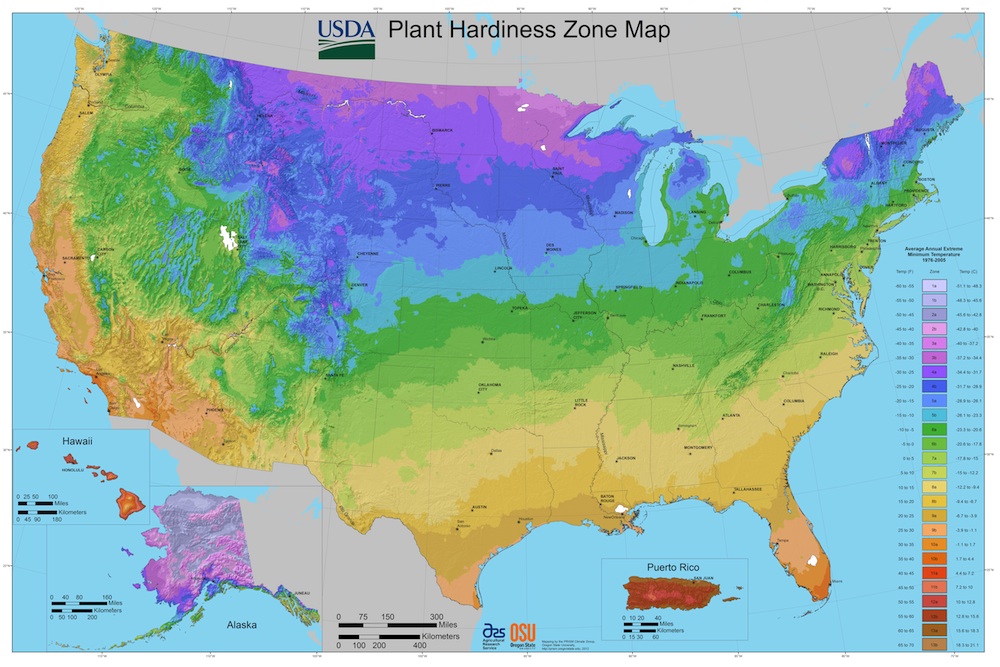
2012 USDA Hardiness Zone Map of Indiana
Indiana’s gardens made a move this past week when the U.S. Department of Agriculture released its long-awaiting Plant Hardiness Zone Map.
The map, which is broken up into zones based on the lowest average temperatures, shows Central Indiana in Zone 6a (-10 to -5 degrees F), which registers a bit warmer than Zone 5b (-15 to -10 degrees F) where we’ve been since 1990.
The government, Oregon State University and experts in meteorology, horticulture and agriculture analyzed weather data from 1976 to 2005 to come up with the new interactive map.
You can plug in your ZIP code or GPS and get even more details about the average weather in your area on the map.
Much of Northern Indiana is now in Zone 5b (-15 to -10 degrees F). The southern border of the state did not change. It remains is in Zone 6b (0 to -5 degrees F), but that area takes up a larger chunk of Southern Indiana. The map also adds two new zones — Zone 12 and Zone 13 — to include tropical regions.
It will take a couple of years for plant tags and other sources of information to catch up to the new map’s rating. Books, too, will have out of date maps, and publishers are scrambling to get the new one included in new releases as soon as possible, said Billie Brownell, acquisitions editor for Cool Springs Press.
Living in a zone that’s been rated slightly warmer invites gardeners to try plants listed hardy to Zone 6, said Steve Mayer, an educator with the Marion County Extension office.
Plants already in the landscape will continue to thrive, “but we might be able to stretch a little bit with some different plants,” he said. He cautioned, however, that smart gardeners would stick with the Zone 5 rating for trees and shrubs, since they are long-lasting plants in the landscape.
The shift in zones does not reflect global warming, which takes 50 to 100 years of analysis, Mayer said.
Many landscape have microclimates, sections of the yard that are warmer than others. City gardeners are more likely to have warmer landscapes than more suburban or rural plots, and the new map reflects this. Urban streets and sidewalks retain heat and buildings protect gardens from winds, said John Platte, owner of Perennials Plus, a wholesale grower and retailer in Westfield, Ind.
“It’s best to think of the map as a guide rather than gospel,” he said.

I like that last quote… a guide rather than gospel. In the meantime, I’m taking a look at some zone 6 plants to try this year.